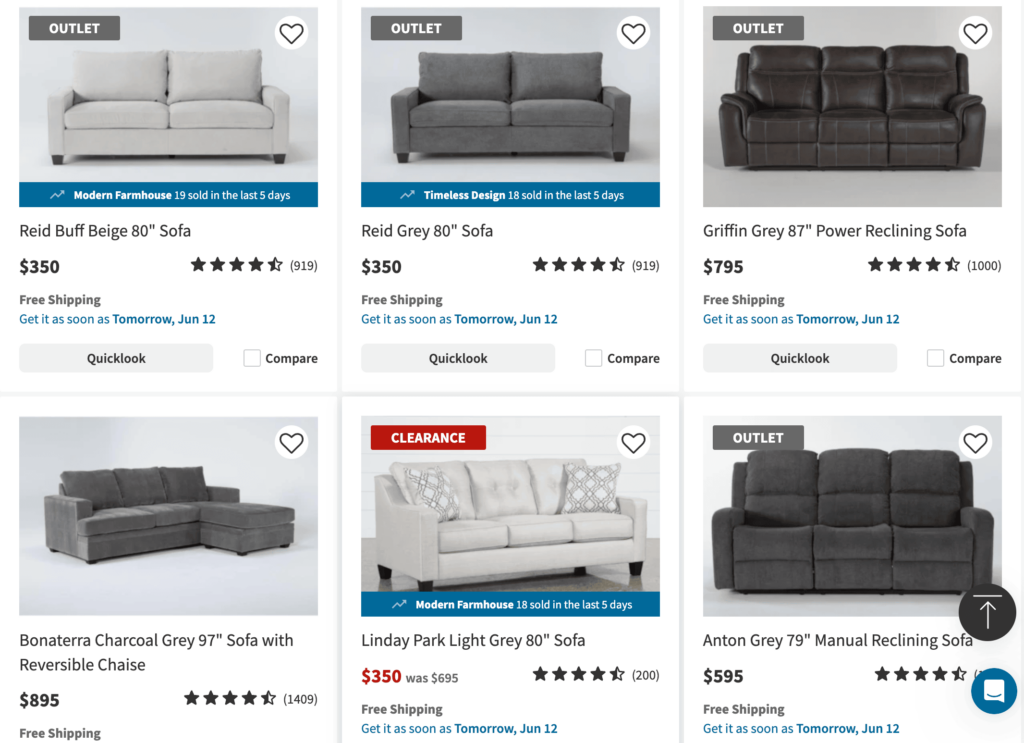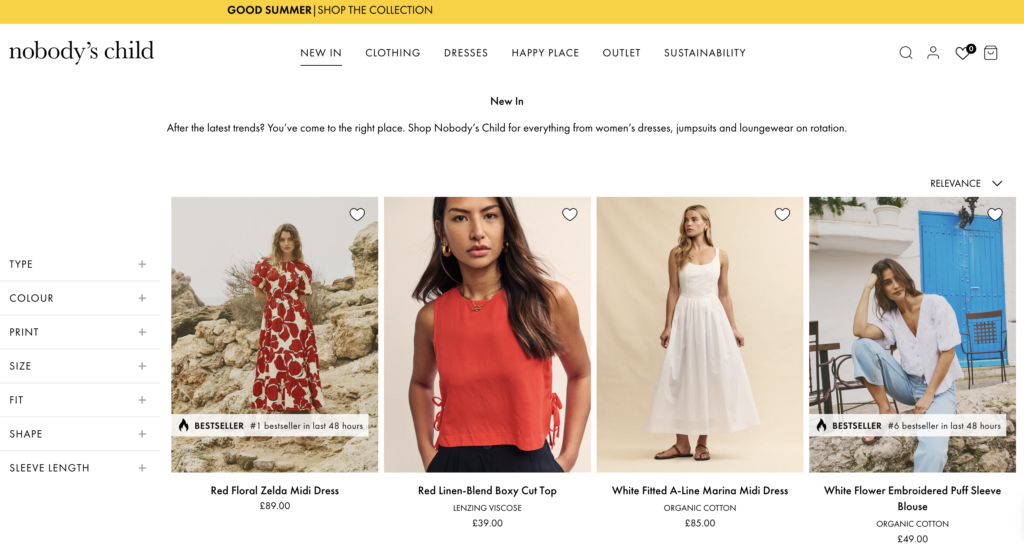In today’s fast-paced digital, multi-device world, acquiring, capturing and holding a shopper’s attention is becoming increasingly challenging. According to the Contentsquare 2024 Digital Experience Benchmark, digital consumption – measured as time spent on site combined with page views – has consistently declined over the past years. Coupled with rising acquisition costs and declining conversion rates, this trend forces retailers and brands to double down on strategies to better engage and convert shoppers along the digital shopping journey.
By leveraging strategies and tactics to reduce bounce rates, increase time on site (TOS) or a specific page, also known as dwell time, you can enhance engagement, improve conversion rates, increase sales and build stronger loyalty. Longer site sessions can also provide valuable customer insights that retailers can use to further improve the overall customer experience.
Of course, a single metric in eCommerce doesn’t tell the complete story and should never be measured in a vacuum. For instance, increased time on site without a purchase could indicate that shoppers are spending a long time on site because they are not finding what they need and end up leaving the site in disappointment.
For a complete picture, TOS should be measured alongside other metrics like conversion rates and/or average order value to fully understand shopper behaviour and business performance.
Read on to learn more about why focusing on increasing time spent on site should be a priority and our top 10 strategies.
How do you measure time spent on a website?
In order to measure time on site (TOS), you need tools that track how long visitors spend on your website from the moment they arrive until they click out. While time spent on site and dwell time are sometimes used interchangeably, dwell time typically refers to the amount of time a visitor spends on a single webpage, whereas time spent on site is the duration of the total session. Time spent on site is calculated from when a visitor clicks through to your site from a search engine or link to the time that the visitor navigates away from the site.
Various methods, metrics, and tools can be used to measure and track time spent on a site. Google Analytics, the most widely used website analytics tool, provides several relevant metrics, including average session duration, engaged sessions, and page timings or dwell time, to help retailers and brands evaluate their performance and develop strategies to improve and grow their businesses.
What is the average time spent on site for eCommerce websites?
The average time spent on an eCommerce website is a key metric for measuring customer engagement and satisfaction. According to the 2024 Contentsquare Digital Experience Benchmark, users spend 2.7 minutes per session on mobile. However, this can vary significantly depending on the industry, website usability, and the quality of the content offered.
For example, Home Goods & Furnishing websites saw the longest engagement at 3 minutes per session, as customers browse through multiple options. In contrast, websites with a straightforward purpose, like Consumer Electronics, experience shorter sessions at 1.9 minutes per session.
Boosting this metric is vital for encouraging conversions. Enhancing user experience through intuitive navigation, fast loading times, and mobile optimisation can make a notable difference. Incorporating real-time social proof, like review messaging or attribute messaging, can significantly increase in engagement and page views.
Why do you need to increase the average time on site?
It is important to focus on increasing time on site (TOS) for several reasons.
User engagement
Typically, increased time on site means higher user engagement, indicating that shoppers find the site and content relevant and valuable. It’s quite simple – engaged site visitors are more likely to make a purchase, return to your site and become loyal customers.
SEO Benefits
From an SEO perspective, spending more time on a site sends a positive signal to search engines, indicating that users find your site relevant and valuable. Thus, spending more time on a site can potentially improve its search rankings and visibility.
Conversion Rate
For eCommerce sites in particular, increased time spent on site can translate into higher conversion rates because a shopper who spends more time on your site is generally more likely to make a purchase. When shoppers spend more time on a site they may also discover additional products to buy, leading to high average order values.
What do you need to consider when optimising your website to maximise time spent on site
However, increased time spent on site is sometimes not positive. For instance, you want shoppers to quickly find what they are looking for. You don’t want them to spend a long time on your site searching for something specific and then leaving because they couldn’t find it. The optimal goal is instead to help them easily find what they’re looking for and, at the same time, provide a pleasant experience that makes them want to engage more with your site, discover and buy additional products and, of course, return another time.
In addition, higher time spent on site and higher user engagement and interaction enable you to capture valuable data on user preferences and behaviour, providing insights into further optimising site performance and improving the customer experience.
Top 10 tips to increase time on site (and session duration!)
Retailers and brands can significantly increase the time shoppers spend on their eCommerce sites by focusing on the user experience, developing great content, and investing in personalisation and digital engagement tools. There are several strategies to increase session duration and time spent on site – here are 10 of our favourites:
1. Enhance site performance and UX
Site speed and page loading times must be optimised to avoid frustration and keep shoppers from bouncing. Simplify navigation so shoppers can easily find what they are looking for, and design your site to strategically entice shoppers to keep wanting more.
2. Optimise for mobile
Shoppers are increasingly using mobile devices for online shopping and exhibiting very different browsing habits. Mobile sessions are 60% shorter than desktop sessions and view fewer pages. Mobile visitors tend to make more yet shorter visits—also known as grazing—and retailers and brands should, therefore, focus on the mobile experience beyond responsive site design and speed.
3. Elevate product descriptions
It may seem basic but detailed product descriptions that clearly communicate features and benefits can significantly boost customer experiences. High-quality images are table stakes and product videos have proven to significantly boost engagement. Capture shopper attention by highlighting key product attributes upfront with attribute messaging.
4. Deliver great content
Beyond product descriptions and quality images, relevant and interesting content like blogs, lifestyle videos, how-to guides, tutorials, and even user-generated content can greatly enhance the customer experience and lead to increased time spent on the site. Also, leverage internal links to different sections of your site and clear CTAs to encourage shoppers to visit more pages and stay longer.
5. Personalise experiences
By leveraging browsing history, purchase, or other customer data, retailers and brands can deliver personalised recommendations, relevant content, and offers that make the shopping experience more relevant and engaging for the individual customer.
6. Include social proof
Retailers and brands like Nobody’s Child and Living Spaces, capture shopper attention and create more dynamic shopping experiences by showcasing what other shoppers are viewing and buying in real-time with social proof messaging.

7. Make it interactive
There are many exciting digital tools available that enable retailers and brands to deliver highly personalised and interactive experiences. For instance, virtual try-on tools simulate the engagement a shopper would have with a product in a store, while interactive quizzes and guided selling help shoppers find relevant products while delivering engaging experiences that entice them to stay longer.
8. Leverage engagement tools
Make it easy for shoppers to interact with your brand in real-time through live chat or even chatbots. User-generated Q&As and user communities also present a great way for shoppers to interact.
9. Implement loyalty programs and gamification
Implement loyalty programs that reward customers for spending time on the site as well as making purchases. Introduce gamification features such as points and badges for engagement and develop contests or games that encourage shoppers to engage more with the site.
10. Keep your site updated and fresh
Ensure you frequently update your site with new arrivals and fresh content. Use real-time data to dynamically highlight trending and bestselling products to automatically keep the site fresh.

Increase time on site and keep visitors on your eCommerce site
By implementing the strategies outlined above, you can create a more engaging, personalised, and enjoyable shopping experience that encourages shoppers to spend more time on your site, discover a wider range of products and ultimately increase conversions and sales.
Retailers and brands invest in social proof messaging because it is proven to deliver significant conversion rate uplifts, but also because it is an effective solution for quickly creating more dynamic experiences that elevate engagement and increase time spent on site and session duration.
Click through to learn more about Taggstar’s social proof messaging solution and attribute messaging, and see how brands and retailers across fashion, home, beauty and more are growing their businesses with social proof.




